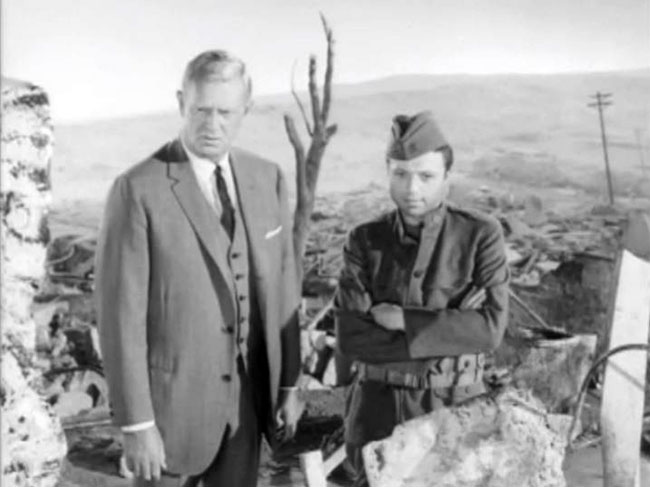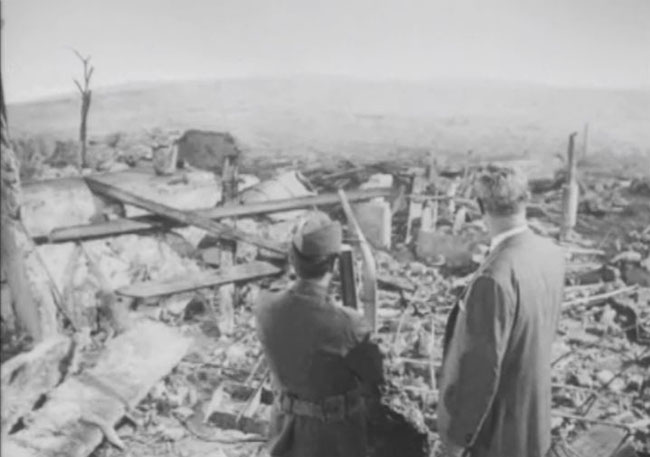
In October 1963, a month before the Kennedy assassination in Dallas, the U.S. ambassador to the United Nations, Adlai Stevenson, delivered a speech in the city to promote the controversial organization. Eyes were watching. Long before the shooting in Dealey Plaza, Dallas was fast becoming a haven for right-wing extremism. In 1960, JFK’s running mate and U.S. Senate majority leader Lyndon Johnson, along with his wife Lady Bird Johnson, were cornered and accosted by right-wing protesters organized by Dallas-based Republican congressman Bruce Alger, an ugly, violent confrontation that made headlines. The John Birch Society was also based in Dallas. The organization saw Communist plots around every corner and believed the goal of the UN was to create a “One World Government.” So when Stevenson arrived in 1963, his goal was to educate the people of Dallas on the UN and to combat the propaganda of extremists. His speech was interrupted by protesters rushing the stage and scattered taunts from the audience, though he received cheers to back his every retort. On the way out to his limousine, he was struck with a placard, called a “traitor,” and spat upon. As Bill Minutaglio and Steven L. Davis recount in their book Dallas 1963:
The chauffeur guns the engine and the car pulls forward as protesters fall away. The limo hurtles through the parking lot, screeching as it turns a corner. Inside the car, Stevenson takes out his handkerchief and wipes the saliva from his face.
Addressing no one in particular he asks:
“Are these human beings or animals?”
Following the incident, a concerned UN proposed a series of all-star, made-for-TV promotional feature films for an American and international market. The purpose of each film would be to educate the public on the value of the UN in encouraging dialogue between nations rather than war. They were joined in this effort by Xerox, whose left-leaning CEO agreed to a company contribution of four million dollars, despite the protests of Conservative stockholders. The first – and most notorious – of these ventures was A Carol for Another Christmas (1964), written by Rod Serling and directed by Joseph L. Mankiewicz, and featuring an impressive celebrity cast.
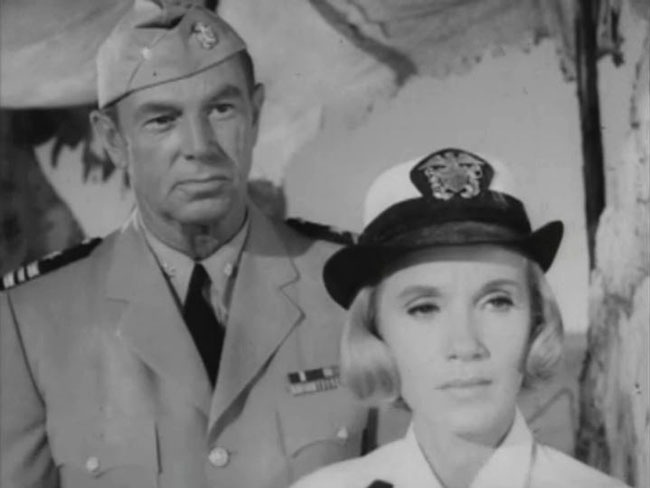
Sterling Hayden, as cold-hearted industrialist Daniel Grudge, pays a visit to Hiroshima, with Eva Marie Saint playing a Navy WAVE.
The last episode of Serling’s freshly-cancelled The Twilight Zone had aired the previous summer. A Carol for Another Christmas plays exactly like a feature-length Twilight Zone special (the series had already experimented with long form in the hour-long episodes of its penultimate season – to mixed results). Serling, left-leaning himself and a pacifist, was only too happy to contribute a script to the UN’s project. Though in retrospect one can see that Mankiewicz’s career was about to wind down, he had just come off the megabudget spectacle Cleopatra (1963), nominated for multiple Academy Awards including Best Picture, and the highest grossing film of its year (regardless of the fact that it didn’t make its money back). Given the strain of Cleopatra‘s production, it might be easier to understand why he’d be willing to downsize so dramatically for his next project. Joining Serling and Mankiewicz were Sterling Hayden (The Asphalt Jungle), Eva Marie Saint (North by Northwest), Ben Gazzara (Anatomy of a Murder), Robert Shaw (From Russia with Love), singer Steve Lawrence, and – fresh off The Pink Panther – Peter Sellers and film composer Henry Mancini. Mancini wrote the special’s main theme, and Sellers lowered his salary to just $350 to participate in the political-themed film. ABC aired A Carol for Another Christmas on December 28, 1964. NBC and CBS had turned it down, fearing political backlash. As it was, the John Birch Society flooded Xerox with letters of protest. As Mitchell Hadley describes the situation for the website TV Party, “The prospect of a massive protest might have intimidated CBS and NBC, but ultimately it was unable to prevent the series from going on the air. Typical of the mainstream public reaction was a letter to TV Guide in which the writer protested ‘this mail campaign to stop a wonderful series by Xerox on the United Nations… No lunatic fringe of prejudiced, prolific letter writers should decide for the rest of us if the United Nations is to be learned about!'”
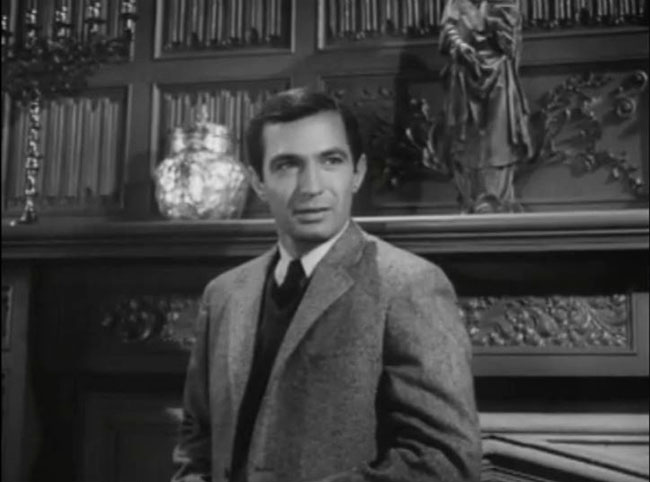
Ben Gazzara playing Hayden’s nephew, Fred.
As the title suggests, Serling’s script was a retelling of Dickens’ A Christmas Carol, but one infused with the tensions and anxieties of the Cold War. Hayden plays the Scrooge stand-in, Daniel Grudge, who has grown bitter in the years following the WWII death of his son Marley. (Peter Fonda played the ghost of Marley in scenes cut from the final film.) His nephew Fred (Gazzara) criticizes him for his isolationist politics, all stemming from Marley’s death in wartime. Later that night, Grudge is visited by the Ghosts of Christmas Past, Present, and Future. But their mission is broader than mere character rehabilitation: they examine Grudge’s politics, and the repercussions of isolating oneself and not engaging in dialogue with the international community. The Ghost of Christmas Past (Lawrence) meets Grudge on a ghost ship traveling through foggy waters and occupied by the specters of dead military men from various points in history. They discuss the brutality of war. He then takes Grudge to Hiroshima, where – in a deeply disturbing scene – Grudge walks through a tent filled with victims of the blast, their faces hidden behind bandages that flutter at their breaths. The Ghost of Christmas Present (Pat Hingle, Splendor in the Grass) indulges in a feast at a banquet table while international refugees crowd nearby in a fenced-off camp. He accuses Grudge of gluttony while others are starving. The Ghost of Christmas Future (Shaw) joins Grudge after a nuclear apocalypse. The small band of survivors – all that remain of the world – worship (with Beatlemania-style screaming) a man called the Imperial Me (Sellers), who dresses in a pilgrim outfit, a cowboy hat on his head spelling ME. This is America after it has cut off all diplomacy and dialogue; when the talking stops, Serling tells us, the fighting begins. Now this savage little community continues to dwindle, killing themselves in the race to become the final individual on Earth. Grudge even witnesses his servant (Percy Rodriguez, Peyton Place) executed for attempting to voice reason to the mob.
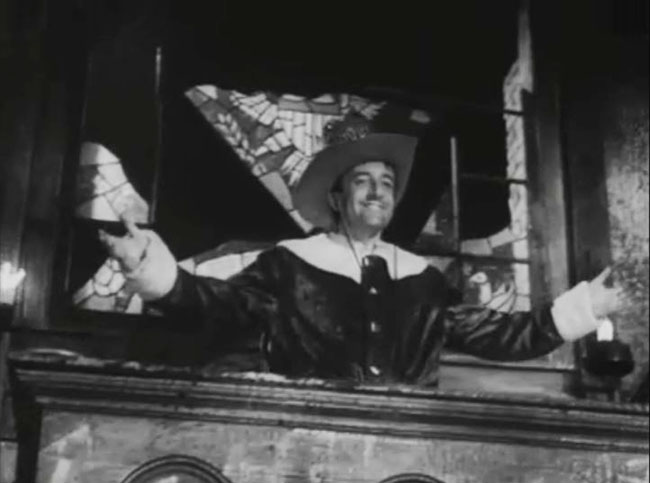
Peter Sellers as the “Imperial Me.”
It’s quite astonishing to see a Christmas special get as very, very dark as A Carol for Another Christmas. Not an ounce of joy is to be found; each image of misery doubles down on the one that came before. Of all the segments, the one set in a bombed-flat Hiroshima is the most laudable, as Hayden’s arguments in support of the bombing and its role in ending the war come face to face with the direct human impact, and the hideous scale of war is on full display. (One can imagine Serling writing this with a copy of John Hersey’s Hiroshima in one hand.) But this is followed by the Ghost of Christmas Future sequence, which tries to imagine an even more desolate and inhuman setting by melding science fiction with avant-garde theater; think The Twilight Zone meets Samuel Beckett meets the “Fall Out” finale of The Prisoner. At its jaw-droppingly darkest moment, the crowd chants to Rodriguez to commit suicide by jumping to his death above the arena where they gather, only to have the decision made by a little kid who takes the gun belonging to his dead daddy and blows Rodriguez away. His mother, played by Sellers’ wife Britt Ekland, smiles approvingly. (This was Sellers’ first acting performance following a string of eight heart attacks that nearly killed him. Reportedly the heart attacks were triggered from popping amyl nitrites as a sexual stimulant.) One can only imagine the reaction of families who’d innocently gathered together one night in 1964 to watch this “Christmas Carol from the guy who did The Twilight Zone.” Even after witnessing this grim moment, Grudge, returning to the present, is not rejuvenated with the spirit of Christmas peace. He does apologize to his nephew, at least, before joining his servants for breakfast in the kitchen. This is his grand gesture – eating in the kitchen with the servants, who are nonetheless still preparing his breakfast. He could at least offer to brew the coffee! Instead, he doesn’t smile, but listens to Christmas music while eating, alone with his thoughts. You can practically feel Serling’s presence hovering over you, chain-smoking, sternly urging you to keep watching, and perhaps demanding that you write an essay on the role of the UN after the ending credits are through.
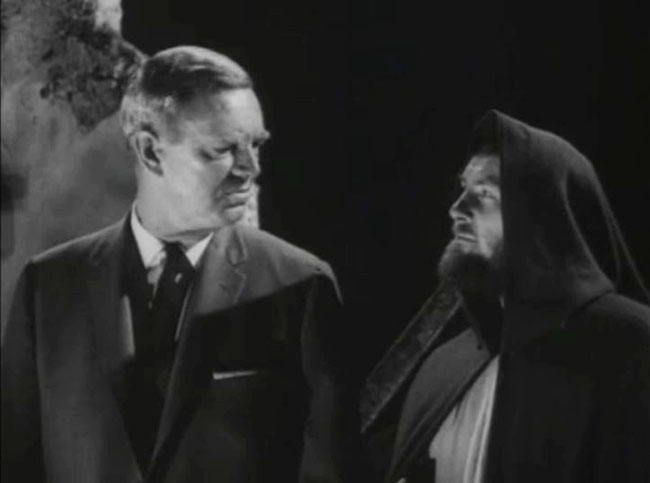
Grudge and the Ghost of Christmas Future (Robert Shaw), witnessing the end of the world.
It’s talky and turgid, and despite some impressive, stark imagery and strong performances, it represents Serling at his most lecturing. The screenplay consists almost entirely of long monologues. The intention might be noble, but the result is almost indigestible; at least the appearance of Sellers, giving it his all as usual, and a very outré apocalypse liven things up a bit for the viewer in the final act. But the Cold War theme does make this film feel like a straight-faced, non-satirical companion piece to Dr. Strangelove (1964), which featured Hayden (and his “precious bodily fluids”) and Sellers, and was also shot in dramatic black-and-white and released the same year. Perhaps it would work best as a special feature on a future Dr. Strangelove home video release. In fact, A Carol for Another Christmas has never been commercially available apart from bootlegs, out of circulation until Turner Classic Movies unearthed it several years ago. Now, every couple years, TCM brings it out of the vault (though the copy being used is missing the Mancini theme music). It’s a curiosity, and that’s all it will ever be, but it’s the rare curiosity that has the perfect (on paper) pedigree. Was Serling right? Did grim times – and the post-Kennedy years were grim indeed – call for grim Christmas fables? If so – then maybe in 2016 Carol for Another Christmas is finally back in season?
